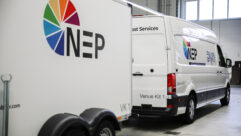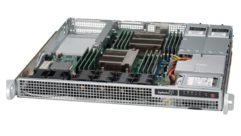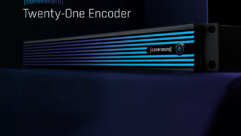
FiberPlex LightViper Reduces Freight Costs for BBC Production in Remote Falkland Islands
Aug 8, 2007 8:00 AM

Click here for more news on Cables from The Briefing Room
Britain’s BBC Television recently used a FiberPlex LightViper audio transport system to capture and link live pictures and sound for a Remembrance Service that commemorated the 25th Anniversary of the British/Argentinian armed conflict. The BBC’s Outside Broadcasts group built a location production room in a tractor shed at San Carlos on the Falkland Islands to provide live coverage of the service, attended by veterans and currently serving British soldiers.
The coverage was sent via satellite and simultaneously fed into live coverage of a corollary service taking place at the Horse Guards venue in London’s Whitehall governmental offices district.
For the BBC’s senior sound supervisor, Tim Davies, there were a number of important considerations since the crew would be working in arduous conditions with limited electricity supply. High on his list were reducing freight costs and equipment reliability.
As the hub for his signal chain, Davies chose a FiberPlex LightViper, a lightweight fiber-optic digital audio snake system supplied by U.K. pro audio supplier, Kelsey Acoustics. The LightViper was configured as a 32×8 system, enabling it to handle all the live and FX mic feeds, sends, and returns.
Davies says, “We needed an easy system to operate and wanted to save on rigging and manpower, not to mention truck space, and reduce the amount of multicores we used.”
However, the BBC Outside Broadcasts did use multicores for signal distribution from the LightViper system. Based in the farm’s tractor shed at the top of a hill, the crew set up a communications system with San Carlos Military Cemetery, which was located 600ft. away. From there they ran the conventional multicore audio snakes to the various points where the FX mics were situated.
To put weight comparisons into perspective, the two 900ft. reels of fiber-optic cables brought by the sound crew weighed approximately 50lbs, including their transport reels. The copper multicore snakes alone weighed a quarter of a ton (500lbs.).
“There were enormous advantages in using the LightViper fiber system; with the mic amps being close to the mics there was no danger of capacitance or loss of phantom power,” Davies says. The small stage box was easily concealed and provided a split output with the four-core fiber cable carrying the sends and returns.
The audio feeds included speeches, a military band, and a choir.
Davies says, “We had 16 mics coming up from the cemetery, and we returned an IEM feed to the MD of the Royal Marine Band—with a click track—so he could play in time.” Davies’ crew was also taking a feed from London to the PA system, as the production team cut between pictures of San Carlos Military Cemetery in the Falklands to London footage from the Horse Guards, mixing in stereo as the main memorial went out live on the U.K.’s BBC Two television station.
As for power, the British Ministry of Defense (MOD) was able to provide the five-camera BBC crew and audio technicians with a 50 amp Rapier missile generator. “The 4-meter satellite uplink dish drew 40 amps of that, while the scanner truck, including two Yamaha O1V’s and the vision mixer, pulled just 8!” Davies says.
“We were 75 miles from the nearest habitation and had traveled to the Falklands with just two and a half tons of equipment, minimalist to say the least. But everything worked beautifully, despite operating in the midst of a snow blizzard, with an incredible wind chill factor.”
For more information, visit www.fiberplex.com.










